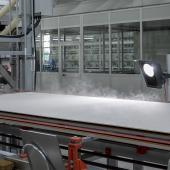The construction industry in North Africa: Tunisia

In spite of a relatively peaceful period of transition following the Arab Spring, Tunisia's economic growth has slowed considerably. Compared to an average annual GDP growth of 5% in the pre-revolution period, 2014 closed with a (nonetheless quite respectable) +2.7%.
The report "Construction in Tunisia - Key Trends and Opportunities to 2018" published by the agency Timetric reveals a positive outlook for the construction sector over the next three years. As a result of the government's efforts to modernise and upgrade public infrastructure and residential buildings, the sector is expected to grow at an average annual rate of 5.26% until 2018, well above the annual average of 3.7% of the period 2008-2013 (then driven by social housing programmes and growth in foreign direct investments in the real estate sector).
One of the country's most ambitious projects is the Tunisia Economic City Project. Unveiled last September, the aim of this mega-project is to build a modern sustainable metropolis with a low environmental footprint in a 90 sq. km area along an 18 km stretch of coastline south of Hammamet.
The city will have a marina and commercial harbour, an industrial area, a free zone for the storage of goods, an exhibition centre and free trade area, a cutting-edge science park, a residential area with high-rise buildings housing a total of 500,000 people, and much more. According to the project's chairman Riadh Khalifa Toukabri, the work is expected to begin by 2018 and should be completed within 15 years, employing 250,000 people. The project has a budget of $50 billion (half of which has already been allocated) with funding provided by international investors (mostly from Europe and the Gulf region).
Back to intro | Morocco | Egypt | Algeria | Tunisia | Lybia
Did you find this article useful?
Join the CWW community to receive the most important news from the global ceramic industry every two weeks





















